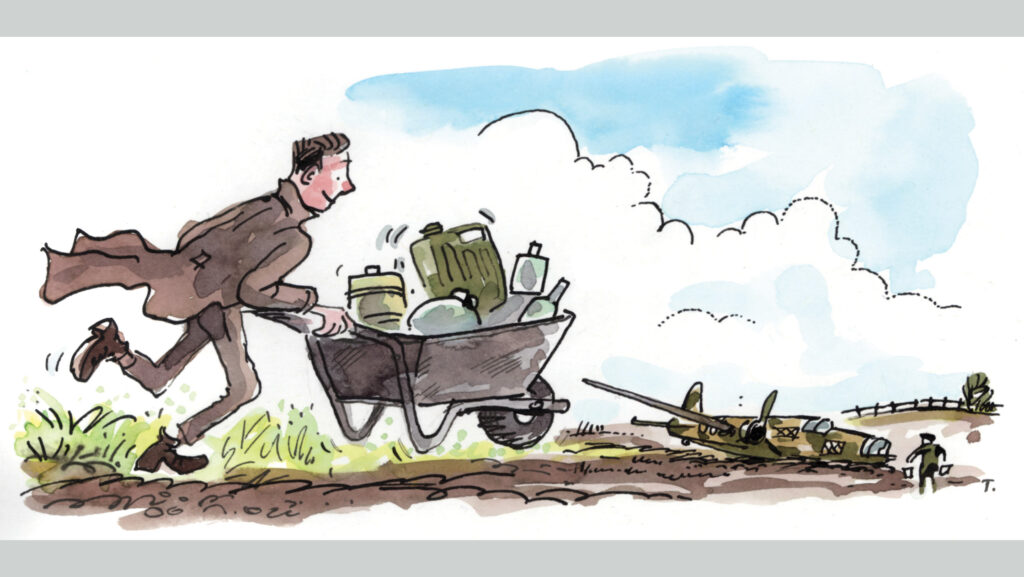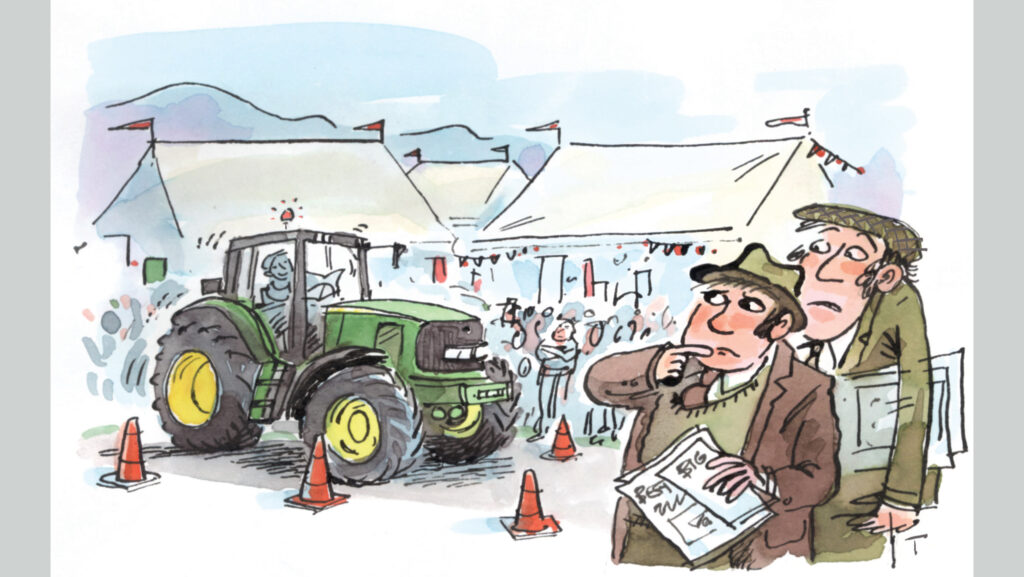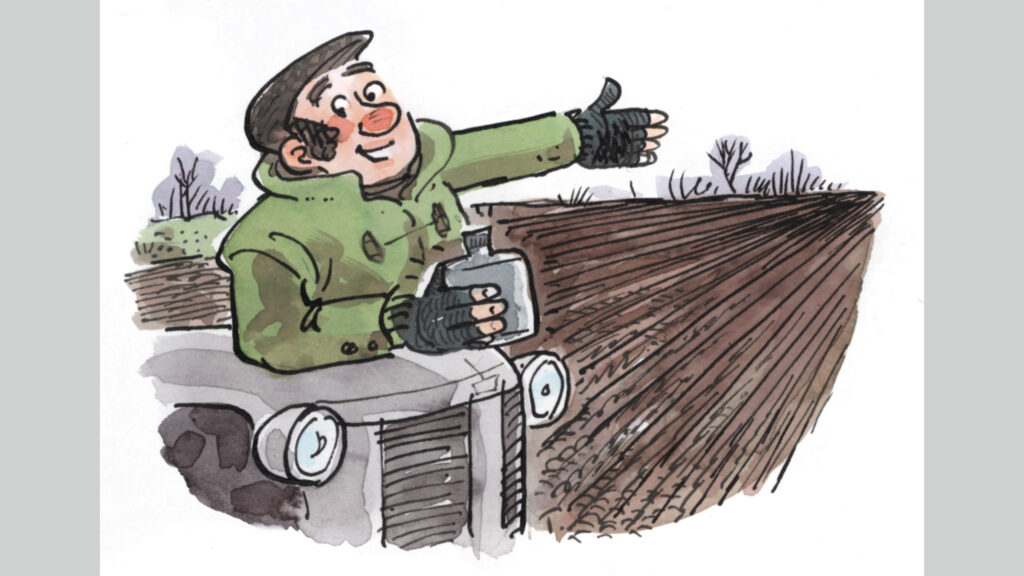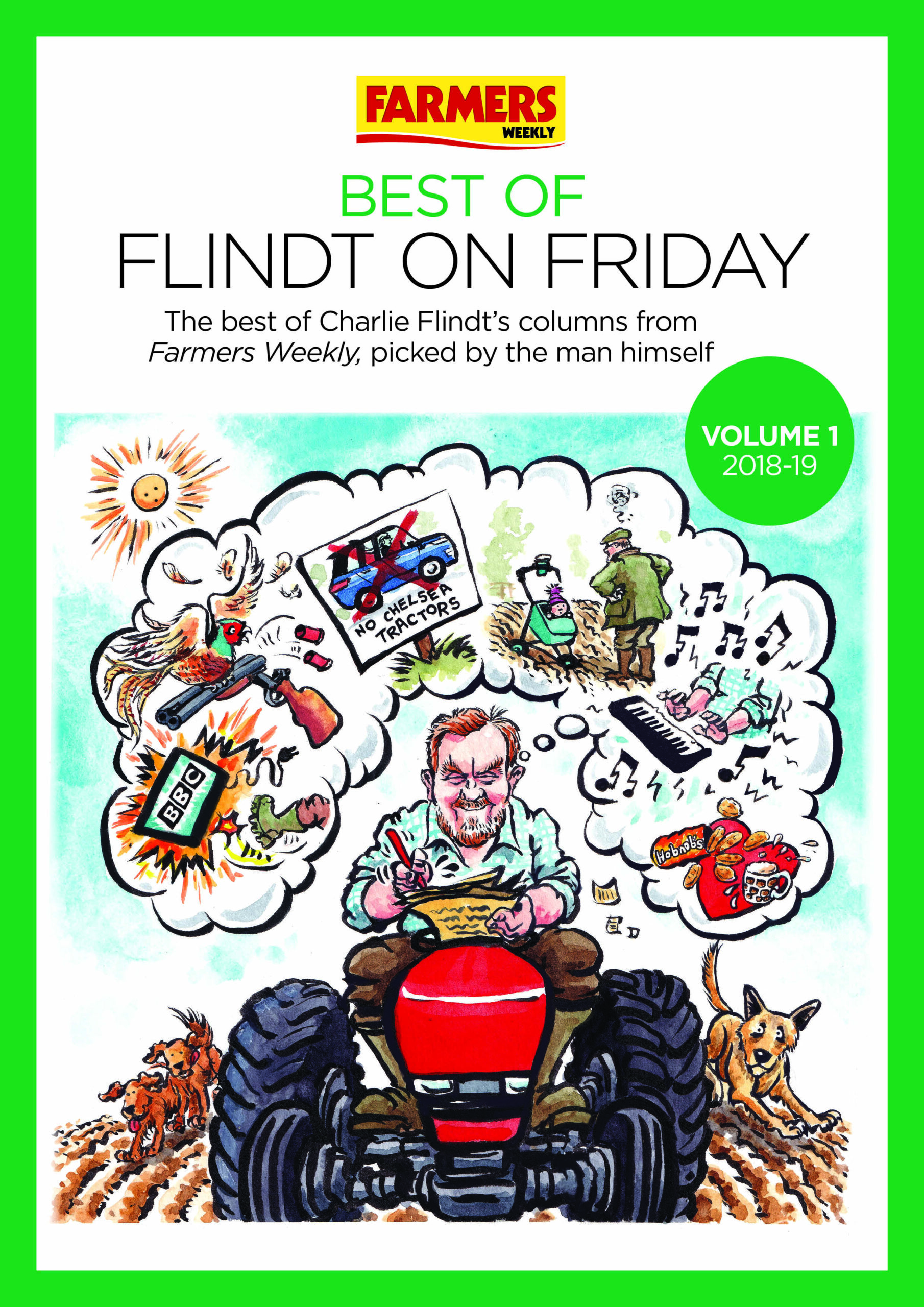FW readers’ farming memories spanning the past 90 years
To help celebrate Farmer’s Weekly’s 90th birthday, we asked for your farming recollections over the years, and were not disappointed.
Here is a selection which may prompt a smile and more storytelling on the farm
See also: Farming memories in pictures – see the gallery of readers’ photos
Bomber delivers rocket fuel bonus

© Jake Tebbit
Before my time, back in 1941 our family was (and still is) farming a few miles west of RAF Hemswell, when a Wellington twin-engined bomber (the Lancaster came later) hit trouble soon after take-off and did a belly landing in one of the fields.
The farm lads ran to help but the aircrew, who had escaped, were chattering away in what sounded like German.
A stand-off ensued until it was realised they were Polish, as two squadrons of Poles were based there at the time.
The air crew headed off on foot and the farm lads noticed fuel leaking from the plane. Some of the RAF’s finest brew was literally going down the drain.
Well, it was too good to miss so they ran back to the farm to grab every bucket, barrel and bottle they could find, to collect some fuel before an RAF guard arrived.
At 110 octane it was like rocket fuel to anything on the farm, but a 50:50 blend with regular petrol did the trick.
The Fordson started with a snort and a bark at first swing of the handle and the farm motorbike went a good 15mph faster on it!
Lincolnshire was known as bomber county and I’m pleased to say a strong RAF presence remains to this day.
Martin Casswell, Lincolnshire
Auto steer – first impressions at Royal Welsh

© Jake Tebbit
The machinery demonstrator’s lot is not an easy one, despite the jet-setting glamorous appearance.
In 2005 “hands-free” GPS-based steering systems were beginning to make inroads into agriculture. At the time I was employed by a farm machinery manufacturer with its head office in Moline, Illinois.
There was a push to get more farmers purchasing GPS-based equipment and an event hosted by the Royal Welsh Agricultural Society seemed just the place to show off AutoTrac, the “new” hands-free steering system.
I was given a stretch of road on the site and reckoned I could drive through a slalom of traffic cones without touching one of them. I set out the cones and drove through them manually, recording my path as I went.
At my allotted time a crowd of sceptical farmers gathered.
I stood and explained that the tractor, not me, would drive between each traffic cone guided by satellites, I only needed to engage the system and it would do the rest.
I was greeted with wry smiles and chuckles of disbelief. The walk back to the tractor in silence seemed to take for ever – think James Herriott, judging at the village show.
The gathered ensemble felt sure no space-age technology could achieve what I had explained, and this event would only prove a “young lad” in crisp blue shirt, tie and beige trousers, knew little to nothing about “proper” tractoring and was about to flatten good traffic cones.
This would be a fantastic pub story for years to come.
No pressure!
I set my 6920S up at the end of the row of cones and set off, engaging AutoTrac, and picked up a copy of Farmers Weekly to read as I went to illustrate how stress-free tractor driving could now be, even if the demo was anything but.
The tractor, a little jerkily, navigated the cones so well I decided to make a return trip. With that completed I returned to the gathering that my recent sales success training assured me would be lined up to place orders.
Instead, they all dispersed in different directions. Not one system sold. But then, that’s marketing. 50% is successful – you just don’t know which 50%!
Harry Henderson, Warwickshire

© Jake Tebbit
I was not brought up on a farm, but spent a summer holiday in a cottage overlooking the Lowther Valley in Cumbria.
The neighbouring hill farm was run by a young couple, David and Carole Bousfield, who had sheep and suckler cows. I started following David around and fell in love with farming.
Aged 10, I told my parents I wished to be a farmer.
Pretty quickly I subscribed to Farmers Weekly and have done so ever since. The mother of one of my good friends in school thought it was quite funny that I didn’t get a comic, but could quote the fatstock prices.
I got a BSc in farm management from Newcastle University, with honours in agricultural economics. I worked a summer on a farm in Vermont and met my future wife, so after graduation I came to the US.
For almost three years I worked for my father-in law but quickly learned that the US government has programmes to help young people into farming.
In 1977 my wife and I bought our first farm, adding a neighbour’s holding about seven years later. We ended up with 400 acres and a herd of 195 pedigree Brown Swiss.
In about 1977 I read an article in Farmers Weekly about a farmer using a New Holland chain-slat round baler to bale wet hay and make silage by sealing the bales in large bags.
I was intrigued and it reminded me how I had helped David Bousfield make about 400 small square bales of silage, very heavy and hard to handle. It all had to be done by hand, stuffing the wet bales in clear plastic bags.
It made excellent feed for the ewes after they had lambed. In 1982 we were able to afford a baler, a Gehl, that could bale wet grass. We ordered 200 bags from England and made our first round bale silage.
No one had ever seen it here and a couple of farm magazines wrote articles about this crazy Englishman bagging big round bales.
Our phone started ringing off the hook as farmers across the country wanted to know what we were doing. Pretty quickly we were ordering 40ft containers of bags from England, until we found a local manufacturer.
We had customers from Vermont to Alaska. When wrappers came about we sold the plastic and the machines.
Soon we were overtaken by proper machinery companies and went back to just being dairy farmers. We were instrumental in introducing round bale silage to north America, all because of an article I read in Farmers Weekly.
After 40 years of farming, we sold our herd and farm in 2012. Since then I worked initially for the State of Vermont Agency of Agriculture, assisting farmers with water quality improvements.
Now I work for the federal government and am the state director in Vermont for the US Department of Agriculture Farm Service Agency.
We help farmers with capital and operating loans and disaster relief programmes. I’m 73, but getting too much satisfaction helping farmers to consider retirement yet!
John Roberts, Vermont, US
Welcome delivery in a biting wind

© Jake Tebbit
In 1958 I had just left agricultural college and was keen to start work on our farm.
It was late March, time to start sugar beet drilling for the factory at Brigg.
The field had been worked ready for the drill, so I fixed the drill to the grey Ferguson.
It was a field near the yard so I got started.
The weather was fine, but a cutting easterly wind made sitting on a tractor rather cold – this was before we had cabs.
I was covered up with as many windproof garments as I could find, but the wind always finds a way in.
Father always stressed the rows had to be straight, so I was concentrating all the time, trying to forget how cold I was.
Suddenly I looked up and there was father handing me a flask.
I stopped the tractor, took the flask and gently poured some brandy down my throat.
My… it soon warmed my system.
I could keep having a swig to keep me warm.
This did not alter my perfect rows, and I finished the field ready for the next one.
David Herring, Lincolnshire

